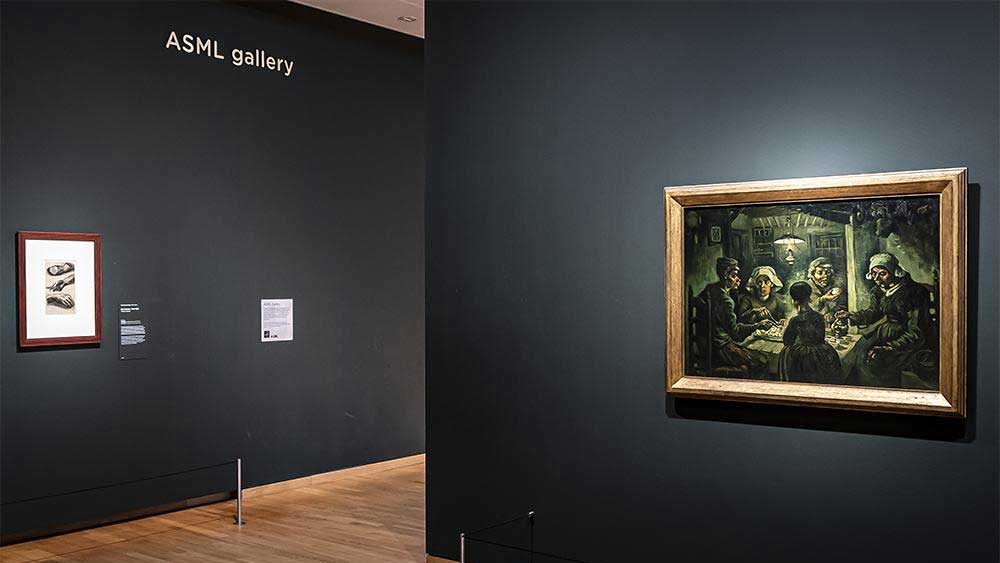
ASML, maker of the world's most advanced chipmaking tools, and the Van Gogh museum have collaborated on the design of a 3D scanner to capture and create digital twins of the masterpieces of the Netherlands’ most famous artist. Vincent van Gogh’s artistic brushwork was characteristic for its ‘Impasto’ style, where paint can be applied in a very thick and textured style. Thus, the ‘Impasto Project’ was born, with ASML and the museum creators developing a 3D scanner that can capture exceptional levels of artistic detail in approximately 100 gigabytes of data per painting.
The curators of the Van Gogh Museum had a dream project, where they could create something akin to the ‘Google Maps for paintings.’ They thought it was worth striking up a conversation with local tech titan ASML and got lucky, as the leading chip toolmaker develops technologies that are perhaps surprisingly applicable to the detailed 3D scanning of paintings.
When ASML was initially approached in 2017, the partnership might have sounded unusual. However, both van Gogh and ASML are Dutch icons, with their roots in the province of North Brabant. Moreover, “at ASML we don't just make chip machines,” explained (machine translation) Head of Research Metrology at ASML, Maarten Voncken. “We also make equipment to measure how accurate those machines are.” This technology turned out to be surprisingly applicable for 3D scanning paintings.
As mentioned above, the pilot program began in 2017 and, after a promising start, the collaboration was extended in 2019. Work has continued apace, and the partners will now collaborate on the Impasto Project until at least 2028.
How the scanner works
The Impasto Project hardware is essentially a small, shoebox-sized scanner guided by a framed system with rails. This imaging process takes photos of dozens of segments of each painting. Each specific area photo is taken four times with the camera at slightly different angles.
This varied data representing the same image segment allows the custom software to calculate the varied thickness of the paint from shadows that are cast. As we mentioned in the intro, a finished 3D image scan of a painting is approximately 100 GB.
ASML measuring equipment is accurate to the nanometer level, so this 3D scanning tool operates at a scale approximately 100,000 times larger. Nevertheless, significant customization of the hardware and software was required to meet the requirements of the museum's curators.
In addition to the digital twin plans, the scanner can also be used to automate the process of inspecting paintings before and after they are lent to other institutions. Thanks to this new tool, curators can check the effects of handling, temperature, and moisture changes when paintings are loaned. Observations will likely be used to improve the handling and transport of these treasured works.
Giving back
Interestingly, ASML is nonchalant about the investment in non-core areas, such as the Impasto Project. It shrugs off the cost of the project at ‘a few million a year.’ It also revealed that around 10 to 15 ASML staffers work on this project. We aren’t familiar with Dutch business practices, but this project seems to be part of a wider commitment to ‘give back’ to the region. Currently, ASML invests around $100 million in local employment projects as part of its ‘social budget.’ ASML also sponsors a gallery at the museum.
With the ASML collaboration established and 3D scanning becoming routine, visitors to the Van Gogh Museum can now visit a new science center within the museum. Here, they will find the 3D scanning equipment on display, among other technical art curation-related things.
Outside interest
Other museums around the world appear to be interested in the Impasto Project technology, but ASML has left the Van Gogh Museum in control of the project's intellectual property. The museum could commercialize it if it wished, and that might happen depending on funding and other factors.
Follow Tom's Hardware on Google News to get our up-to-date news, analysis, and reviews in your feeds. Make sure to click the Follow button.







